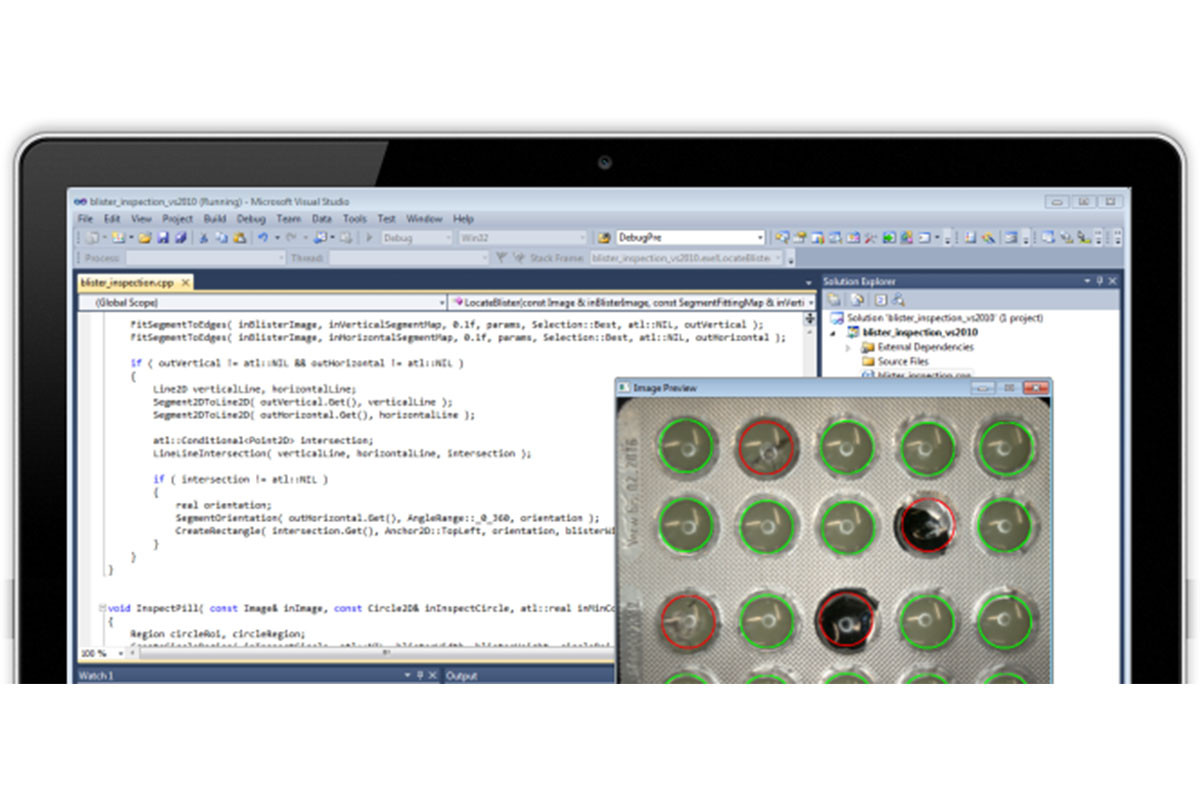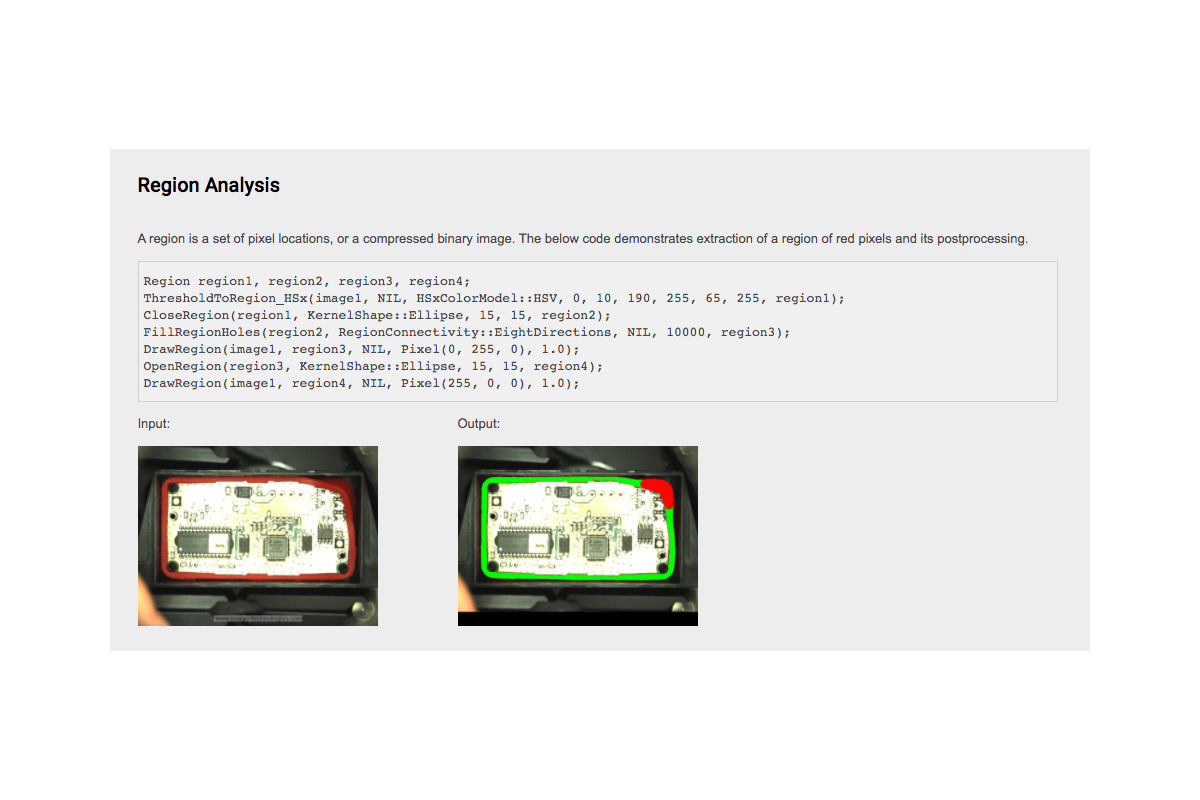Aurora Vision Library
Aurora Vision Library. Machine Vision Library for C++ and .NET.
AURORA VISIONAurora Vision Library. Machine Vision Library for C++ and .NET.
AURORA VISION
Aurora Vision Library is a machine vision library for C++ and .NET programmers. It provides a comprehensive set of functions for creating industrial image analysis applications – from standard-based image acquisition interfaces, through low-level image processing routines, to ready-made tools such as template matching, measurements or barcode readers.
The functions available in Aurora Vision Library closely correspond to the filters of Aurora Vision Studio. Therefore, it is possible to prototype your algorithms quickly in a graphical environment and then translate them to C++ or .NET, or even generate the C++ code automatically.
Aurora Vision Library gives you instant access to the highest quality, well optimized and field-tested code that you need for your machine vision projects!
In Aurora Vision Library careful design of algorithms goes hand in hand with extensive hardware optimizations, resulting in performance that puts the library AVX/NEON instructions and parallel computations on multicore processors.
All types of data feature automatic memory management, errors are handled explicitly with exceptions and optional types are used for type-safe special values. All functions are thread-safe and use data parallelism internally, when possible.
The library is a simple collection of types and functions, provided as a single DLL/SO file with appropriate headers. For maximum readability, functions follow consistent naming convention (e.g. SmoothImage, RotateVector. All results are returned via reference output parameters so that many outputs are always possible.
OpenCV is a great open source library maintained by a non-profit foundation. In terms of fundamental image processing, OpenCV provides similar functionality to our AVL Lite. Major differences arise when it comes to higher level algorithms. OpenCV focuses on such topics as face recognition, augmented reality or motion segmentation. On the other hand, AVL provides ready-made tools for shape analysis, template matching or code reading which are more specific to industrial machine vision applications. Some unique features of AVL also are: blob analysis, any-shape regions of interest and support for industrial image acquisition interfaces.
With minimum order of 25 runtime licenses we can offer you an OEM contract. You can select one or two modules that you are interested in and we will provide you that with a discount. Please contact our team for details.
Some of our customers buy hundreds or even thousands of runtime licenses per year. These we will provide with discounts. Please contact our sales for details.
We offer development and runtime licenses. You need at least one development license and then one runtime for each system you deploy. The price of the runtime version depends on your quantity and hardware setup. Licenses for standard PC computers or embedded systems are cheaper than licenses for computers that can run many inspections in parallel. Our business model here assumes that we give you a product that greatly accelerates development of your vision systems, and the more successful you are the more we are rewarded too.
Aurora Vision Library C++ can be used with Microsoft Visual Studio C++ (2013-2019) and GCC compilers. It runs on industrial PCs as well as on embedded devices such as:






Maggiori informazioni sul prodotto?
Grazie per averci contattato, vi risponderemo prima possibile.
Prosegui